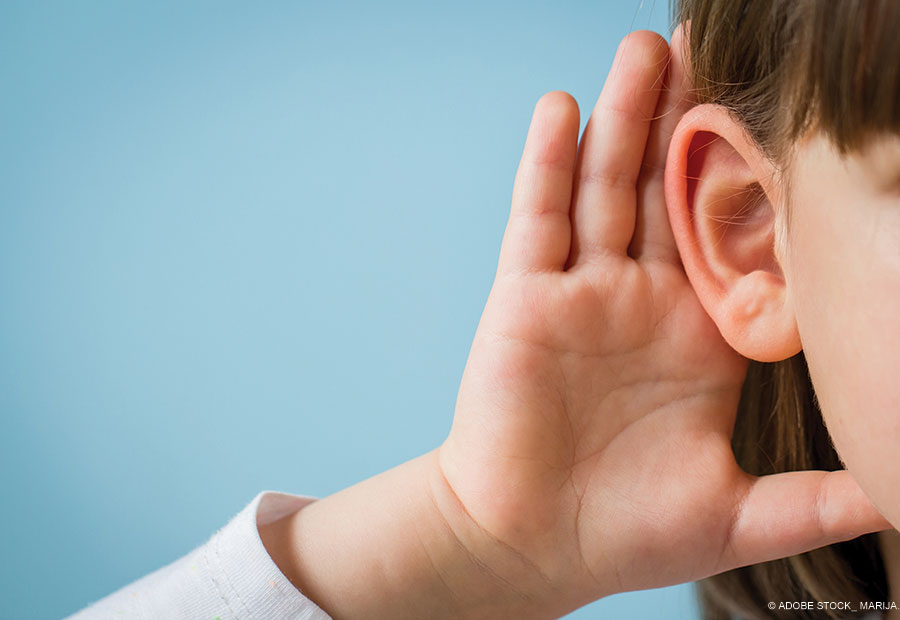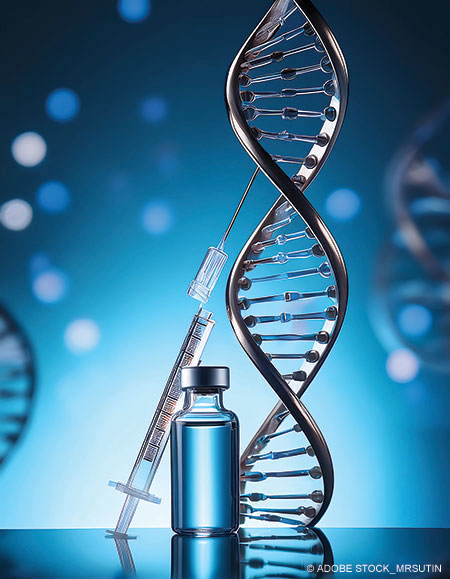 The potential for gene therapy in treating hearing loss has made Daniel Choo, MD, “insanely excited by new developments in my field of otology/neurotology” for the second time. The first time was due to cochlear implantation. Dr. Choo is an otologist/neurotologist for the division of pediatric otolaryngology–head and neck surgery at Cincinnati Children’s Hospital in Ohio and the University of Cincinnati department of otolaryngology–head and neck surgery.
The potential for gene therapy in treating hearing loss has made Daniel Choo, MD, “insanely excited by new developments in my field of otology/neurotology” for the second time. The first time was due to cochlear implantation. Dr. Choo is an otologist/neurotologist for the division of pediatric otolaryngology–head and neck surgery at Cincinnati Children’s Hospital in Ohio and the University of Cincinnati department of otolaryngology–head and neck surgery.
Explore This Issue
June 2025During medical school, when the use of cochlear implants for children was not yet approved by the U.S. Food and Drug Administration (FDA), Dr. Choo witnessed a difficult conversation between his chair and the parents of a baby born deaf. The parents were advised that they should learn sign language and connect with a school for the deaf. “We never have to have that conversation these days. When we started doing cochlear implants in children, it was life-changing to take a deaf baby and let them hear for the first time. That was exciting.”
Gene therapy as a potential treatment for hearing loss “rates with that level of excitement,” Dr. Choo said. To inject something into the ear of a “person who is profoundly deaf and have their hearing come back over the next 30 days is unbelievable. With no implanted devices and no hearing aids.”
Recent Advancements
Gene therapy to restore hearing has made the most advancement in patients with hearing loss due to mutations in the OTOF gene, which encodes for the protein otoferlin, explained Kenneth Lee, MD, PhD, John W. and Rhonda K. Pate Professor of otolaryngology–head and neck surgery, and director of pediatric otolaryngology and the Cochlear Implant Program at UT Southwestern Medical Center in Dallas, Texas. “This protein is involved in regulating the release of neurotransmitters from the cochlear hair cell to the auditory nerve. Mutations of the OTOF gene disrupt normal neurotransmitter release and lead to hearing loss.”
 In 2022, an investigational gene therapy was administered for the first time to a patient with autosomal recessive deafness 9 (DFNB9) caused by mutations of the OTOF gene. Researchers at Fudan University in Shanghai and Massachusetts Eye and Ear in Boston reported their results in The Lancet in 2024. At 26 weeks, after receiving a single injection of the AAV1-hOTOF gene therapy, five of six children demonstrated hearing recovery in the treated ear (The Lancet. https://doi.org/10.1016/S0140-6736(23)02874-X).
In 2022, an investigational gene therapy was administered for the first time to a patient with autosomal recessive deafness 9 (DFNB9) caused by mutations of the OTOF gene. Researchers at Fudan University in Shanghai and Massachusetts Eye and Ear in Boston reported their results in The Lancet in 2024. At 26 weeks, after receiving a single injection of the AAV1-hOTOF gene therapy, five of six children demonstrated hearing recovery in the treated ear (The Lancet. https://doi.org/10.1016/S0140-6736(23)02874-X).
“Clinical trials from several companies are showing very exciting hearing restoration in children” with otoferlin-related deafness, which is driving the push for clinical trials into other forms of genetic deafness, said Lawrence Lustig, MD, Howard W. Smith Professor and chair of the department of otolaryngology–head and neck surgery at Columbia University Medical Center in New York. “In the Regeneron trial I am involved with, the first patient treated (outside the U.S.) achieved near normal hearing levels.”
Regeneron Pharmaceuticals’ ongoing phase 1/2 CHORD study of its DB-OTO gene therapy aims to enroll around 22 children aged up to 17 years in the U.S., Spain, and the U.K. (https://clinicaltrials.gov/study/NCT05788536). Akouos, a subsidiary of Eli Lilly, is investigating its AK-OTOF gene therapy in an ongoing phase 1/2 study, dubbed AK-OTOF-101, in participants of any age in the U.S., Taiwan, and the U.K. (https://www.clinicaltrials.gov/study/NCT05821959).
Native hearing, as compared to hearing aids or implants, takes advantage of all the acoustic benefits of human ear anatomy and physiology. — Daniel Choo, MD
Leave a Reply